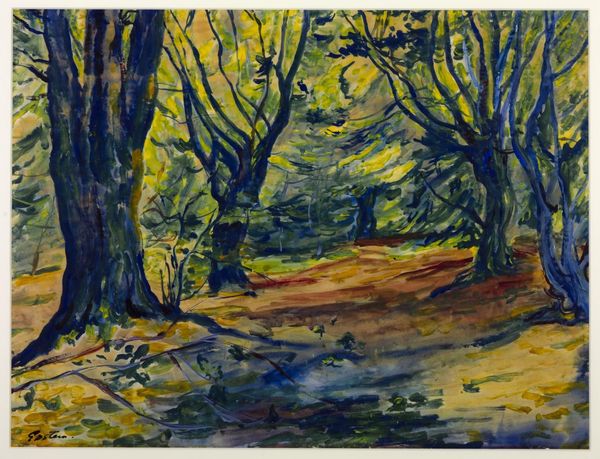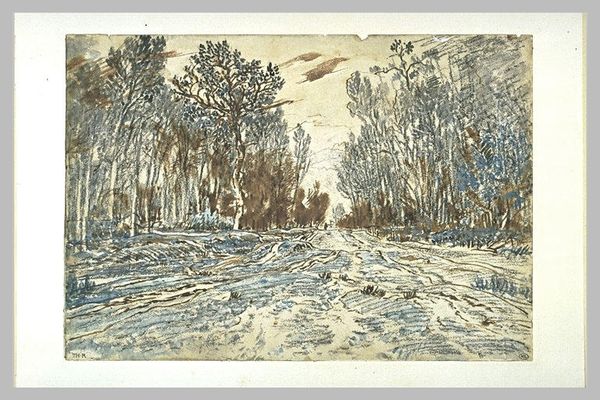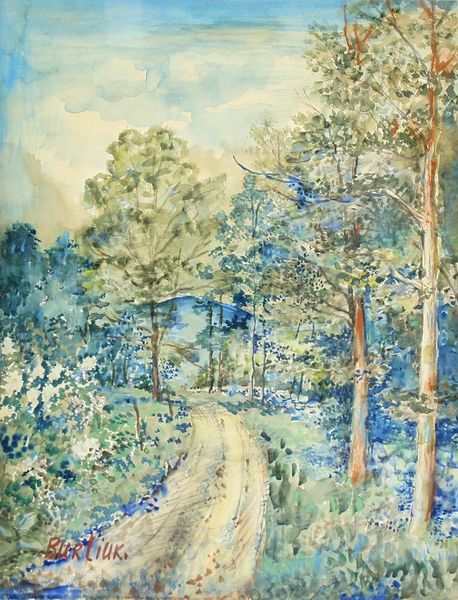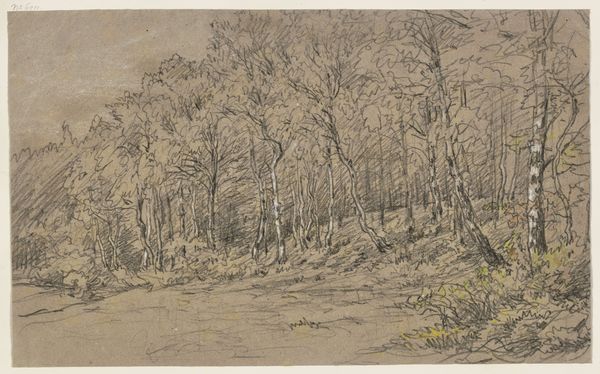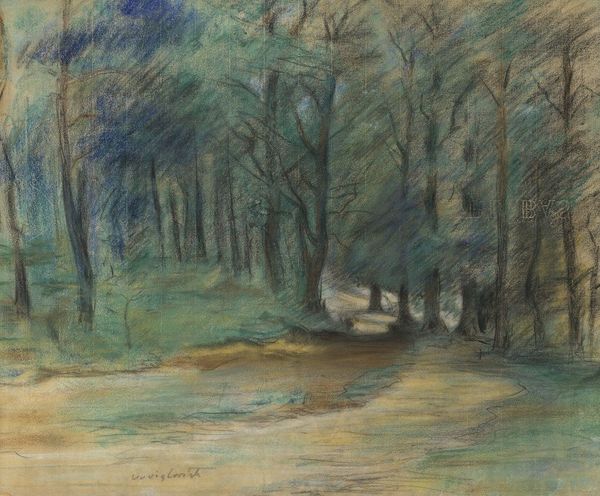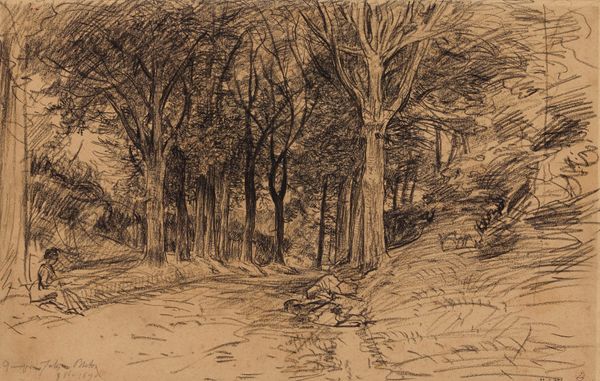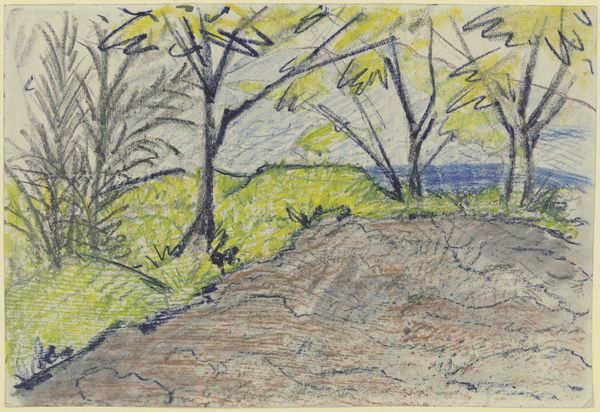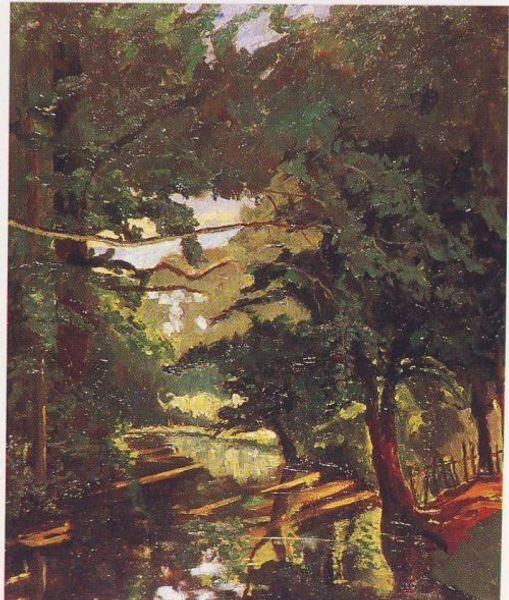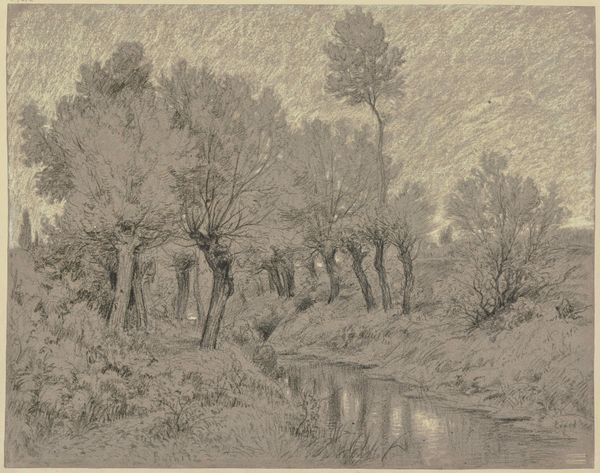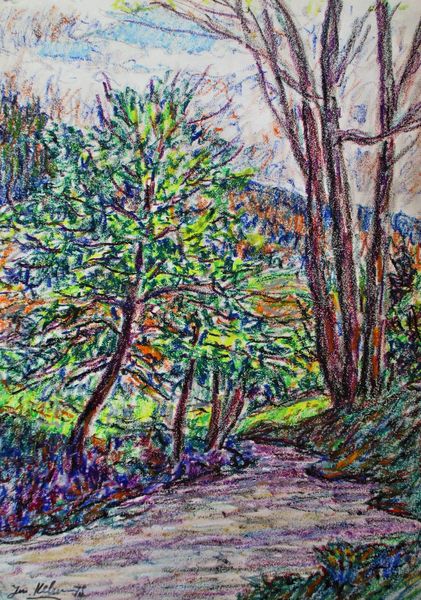
Copyright: National Gallery of Art: CC0 1.0
Curator: Here we have Mortimer Borne's "Mahopac Landscape," an etching printed on paper, created in 1945. Editor: There's a cool melancholy here. A kind of washed-out quality that pulls me right in, like an old postcard of somewhere half-remembered. Is that intentional or simply the characteristics of an etching printed on paper? Curator: Perhaps both. Etchings, particularly during this period, experienced something of a boom, because artists and the WPA needed ways to mass produce artworks. Its dissemination, in and of itself, made landscape art like this more widely accessible. Editor: Interesting. You know, I'm curious about how Borne handled the plate itself. Look closely at the line work, especially in the trees; he's not just replicating what he sees. The texture and layers feel deliberately built up. Curator: Precisely. This period of landscape art often acted as propaganda intended to define the American character, where landscapes promoted ideas about leisure and freedom in relation to home and land, after World War II, specifically. Editor: Hmmm. It reads as a somewhat sad escape route—almost bleak, no bright colors here, not a real utopia in sight—but I see your point. Still, what does this piece accomplish if it can't offer a glimpse of joy in labor or respite? Or offer an accessible narrative about the American pastoral, writ large? It all feels somewhat remote from the everyday reality of ordinary people. Curator: You’re not wrong, this image has a slightly unsettling, or maybe just removed, air to it. Consider, however, the social function and limitations imposed on artists to visualize idealized locales: what Borne might have wanted to depict is beside the point. Instead, the museum acquired this print to preserve this perspective as evidence. Editor: So we see a sliver of nature packaged for an imagined public, rendered through specific techniques and materials... which we still grapple with today. I appreciate Borne’s contribution on a more complex and thought-provoking level now. Curator: As do I. Thinking through the conditions of its production only enhances our understanding of the art object.
Comments
No comments
Be the first to comment and join the conversation on the ultimate creative platform.


